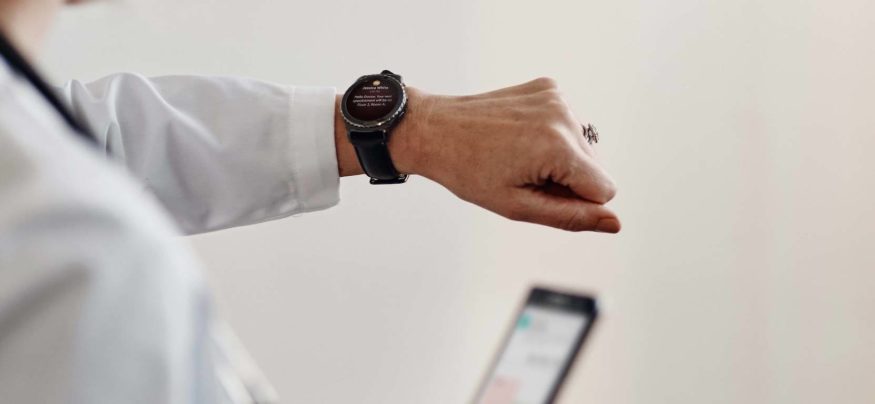Wearables are on the fast track, evolving from a consumer product to an enterprise-ready tool for enhanced user productivity. The education market for wearables is expected to grow at nearly 46 percent per year through 2020, and the demand for wearables in public safety is growing.
In healthcare, the advent of wearables brings with it security concerns, with the privacy of patient records being a topic of special interest. Hospital staff may be eager to take advantage of the productivity gains inherent in wrist-worn devices, but they need assurance that patient information and medical communications are secure in the wearable ecosystem.
Wearables in Healthcare on the Rise
Before considering the security of modern wearables, it’s important to set the stage for the adoption of wrist computing in healthcare. Why are medical professionals moving in the direction of wearable devices in the first place?
From a practical standpoint, wearables can allow nurses to be hands-free while taking care of patients. It may reduce their need to carry another mobile device for information or medical alerts. As apps become more readily deployable and manageable on devices like the Gear S3, stakeholders from across the healthcare enterprise are finding ways to utilize this new technology. They’re looking to wearables as a way to improve clinical communications, streamline the patient experience and enhance productivity among care providers.
Hospitals may wish to deploy wearables to patients, for example, to ensure their full participation in the ecosystem workflow. As a clinical tool, a wearable may serve as a heart rate monitor. As a productivity enhancer, a wrist-worn device may notify the patient of wait times or confirm medication information, easing the administrative burden on staff members.
Wearables also give nurses an easy way to check medical records and view patient identification information. They offer hospital staff a new communication channel, serving as a streamlined means to enable nurses to dispatch for assistance, or keep in touch with team members.
Additionally, doctors can use wearables to perform a medication allergy check before beginning a procedure. They can also access these devices to alert medical teams in an emergency, or to brief themselves on patient records before surgery.
The range of clinical and productivity uses already available is just the beginning. These are early days for wearables in hospitals, and with the emergence of new apps, practitioners will see a range of new functions arise. For this to happen, though, the wearable ecosystem must be secure.
Securing Patient Data in the Mobile Era
Download this free guide on ensuring the security of your healthcare apps. Download Now
Building a Secure Ecosystem
The Gear S3 is secured by Knox Tizen Wearable 2.0, a hardware-based, built-in platform delivering security, manageability, productivity and personalization. Fortified with Samsung Knox security, the platform offers security enhancements at the kernel level.
Tizen Security Enhancement offers permissions management for apps and data, a key element in securing mobile devices. The Trusted Boot function secures the device on startup, analyzing whether booting components have been tampered with, while Kernel Protection delivers real-time kernel monitoring and protection. Keys are securely stored in a TrustZone.
One way enterprise IT managers can ensure the security of their mobile devices, in any format, is through hands-on management of their inventories. Knox Tizen Wearable 2.0 gives IT managers access to hundreds of APIs to effectively manage Gear devices.
Device management tools in the ecosystem include call, data and SMS management, along with control over microphone and ring tone. IT managers can install and remove apps, allow or disallow an application, and lock or wipe a device, fortifying security across the healthcare enterprise.
Firewall settings and configuration controls with Samsung Knox security further enhance security. The rise of enterprise-grade security is helping drive the rapid adoption of wearables across a range of industries, including healthcare. As developers create new apps to customize the wearable experience, the Tizen security ecosystem ensures IT managers have the needed level of security to deploy wrist-worn devices even in information-sensitive environments, including hospitals and other medical facilities.
What does the future of healthcare look like? Here’s a glimpse at how wearables promote patient health and engagement.









